Art & Exhibitions
Top 10 Museum Exhibitions in Germany This Summer You Don’t Want To Miss
The ultimate guide to art in Germany this summer.
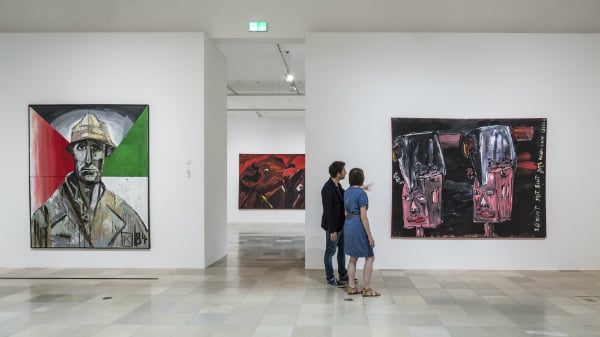
Photo: Städel Museum
The ultimate guide to art in Germany this summer.

Hili Perlson

In a recent article published by Spiegel Online titled “Haphazard and Uninspired,” Ulrike Knöfel asks, rightfully, why Berlin is the “World’s Most Boring Museum City”—despite the fact that the German capital is in possession of spectacular collections of antiquities, Old Master paintings, design archives, and is the home of choice for many international, highly visible contemporary artists.
But rather than sit and wait for the slow wheels of bureaucracy to turn in the federal government-funded cluster of Berlin State Museums, we looked elsewhere in Germany and found that, outside the over-hyped capital, museums prove things can be done differently. From Munich to Hannover, state-funded institutions have a lot to offer, be it blockbuster shows or thoughtful explorations of important moments in recent German art movements. Not to mention a slew of strong exhibitions dedicated to women artists—which is, sadly, another weak point for Berlin.
Here are, in no particular order, the best 10 shows to see in Germany this summer:
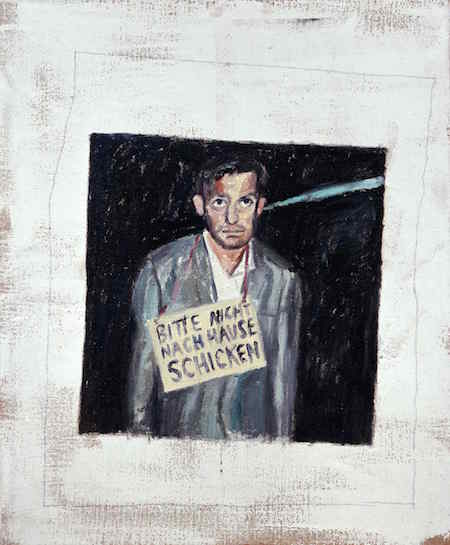
Martin Kippenberger Bitte nicht nach Hause schicken (1983)
Photo: Estate of Martin Kippenberger and Galerie Gisela Capitain, Cologne, courtesy Haus der Kunst, Munich
1. “Geniale Dilletanten,” Haus der Kunst, Munich
In 1981, a radical concert was held at Berlin’s Tempodrom called “Geniale Dilletanten” (Brilliant Dilettantes). The deliberately misspelled title of the show became a catch-all phrase for an anti-establishment artistic movement in Germany between 1979 and 1984 that spanned music, film, and art.
The exhibition at Munich’s Haus Der Kunst explores the rebellious creative output of this 1980s era in Germany with a selection of music, film, art, design, fashion, and photography from the early stages when the movement was firmly underground.
“Geniale Dilletanten: Subculture in Germany in the 1980s” is on view at Haus der Kunst, Munich, from June 26 – October 11, 2015.
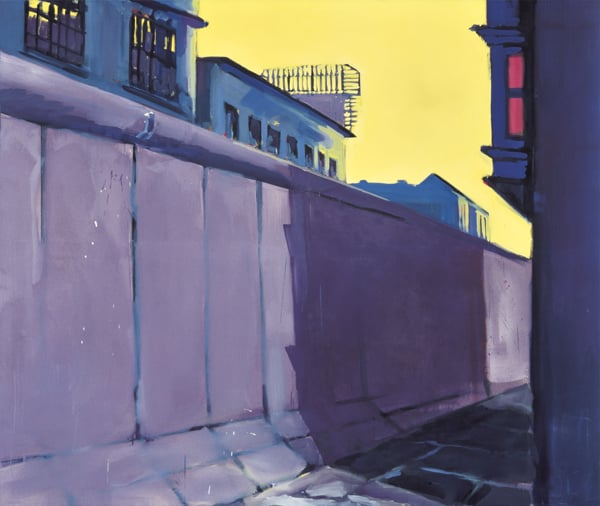
Rainer Fetting First Painting of the Wall (1977)
Photo: Städel Museum – ARTOTHEK © Rainer Fetting
2. “The 80s, Figurative Painting in West Germany,” Städl Museum, Frankfurt
Similarly to the exhibition in Munich, and with some overlap, this show also turns to the influential, rebellious decade in Germany, but with a clear focus on the style of figurative painting that had emerged in the former West.
The comprehensive exhibition explores the scenes around different artist communities and traces how, albeit with very different motivations, artworks were being made that questioned painting tradition, various post-war avant-garde movements, and the artists’ own immediate present, often championing “Bad Painting” and staged dilettantism.
With works by such names as Luciano Castelli, Walter Dahn, Rainer Fetting, Martin Kippenberger, Helmut Middendorf, Albert Oehlen, Salomé, Andreas Schulze, Bettina Semmer, and more.
“The 80s: Figurative Painting in West Germany” is on view at Städl Museum, Frankfurt, from July 22 – October 18, 2015.
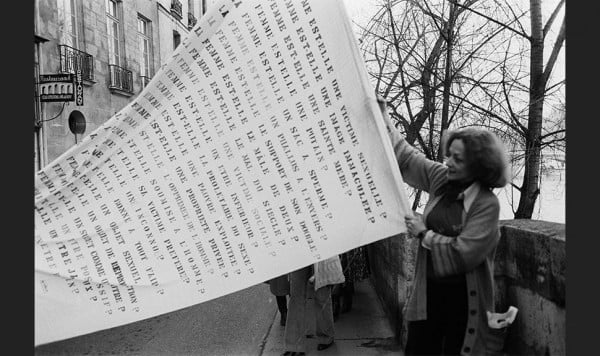
Lea Lublin Dissolution dans l’eau. Pont Marie, 17 heures Performed in Paris on March 11, 1978.
Photo: Anonymous. Courtesy Estate of the artist/ Collection Nicolas Lublin
3. Lea Lublin, Lenbachhaus, Munich
This is the first ever retrospective dedicated to the Argentine-French artist who passed away in 1999. Many works have been restored for the show and are on view for the first time in 20 years.
The survey begins with Lea Lublin’s conceptual works from the mid-60s, which, in the vein of contemporaries such as Allan Kaprow and Lygia Clark, engage with agency and participation in a commitment to overcoming the gap between art and life. A photo of the artist carrying her baby in a museum, Mon Fils (1968), should be read as a bold testament to the struggles women artists faced at the time (and still do today).
The exhibition also features a reconstruction of Lublin’s monumental environment installation, Fluvio Subtunal (1969), and her inquiry into Marcel Duchamp’s time in Buenos Aires.
“Lea Lublin, Retrospective” is on view at Lenbachhaus, Munich, from June 25-September 13, 2015.

Tino Sehgal and performers in front of the Martin-Gropius-Bau Berlin, June 2015
Photo: © Mathias Völzke
4. Tino Sehgal, Martin Gropius Bau, Berlin
The first major exhibition dedicated to Tino Sehgal in his hometown, this show—in an institution not affiliated with Berlin’s aforementioned state-run museums—brings together five so-called “situations” by the intentionally elusive artist.
The works aren’t new, and visitors will recognize situations from the 4th Berlin Biennale (Kiss, 2002) or documenta 13 (This Variation, 2012), with the most recent one being the enduringly haunting Anne Lee (2011) that’s also currently on view in New York, in Philippe Parreno’s exhibition at the Park Avenue Armory.
What is in fact new about this show is the space given for some of the situations to spill into each other, with much cross-over taking place in the museum’s grand atrium. The “interpreters”—Sehgal’s incredibly intuitive performers—slip in and out of character, rooms, and yes, situations, adding to this near-retropective show its perhaps most compelling element: viewer engagement. But hurry, the show ends soon.
“Tino Sehgal” is on view at Martin-Gropius-Bau, Berlin from June 28 – August 8, 2015.
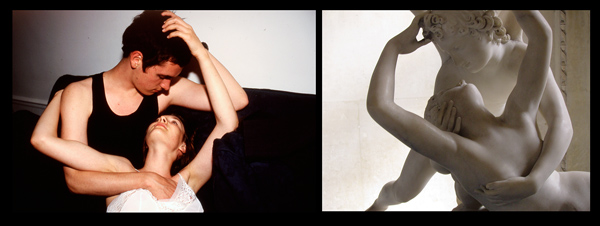
Nan Goldin The Look (2014)
Photo: Courtesy the artist and Matthew Marks Gallery, New York
5. Nan Goldin, Kestnergesellschaft, Hannover
Nan Goldin‘s Scopophilia series (2010 – ongoing) is being exhibited for the first time in Germany, with its full 25-minute slide show and 400 photographs, alongside earlier works and newly-arranged grids by the influential American photographer.
In Scopophilia (love of looking), Goldin juxtaposes new photographs of classical artworks taken at the Louvre Museum in Paris with early photographs of her friends and lovers, set to a soundtrack of a soprano singing Ovid’s metamorphosis in Latin, recorded in an empty Louvre. Intensely beautiful and arresting, the photographer’s subjective gaze creates astonishing parallels between the two pictorial worlds and imbues both with memories of love, friendship, and loss.
“Nan Goldin” is on view at Kestner Gesellschaft, Hannover, from June 19 – September 27, 2015.
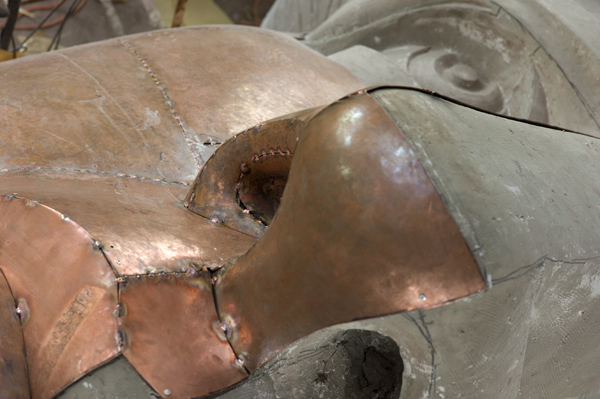
Danh Võ, We The People (2010-13)
Photo: Courtesy Danh Võ
6. Danh Võ, Museum Ludwig, Cologne
The Danish-Vietnamese artist has gotten more attention for his bitter public feud with art-flipper Bert Kreuk than his art recently, so this exhibition is a good chance to shift the focus back to his practice. Danh Võ combines personal experiences from his childhood in Vietnam with the story of his family’s flight to Europe and raises questions about colonialism, migration, and cultural identity.
The exhibition brings together new works as well as well-known classics, including his long-term project We The People (2010-13). Most of the 250 fragments of the Statue of Liberty replica are scattered across various public and private collections around the world, but the Museum Ludwig is presenting a six-meter-high, contiguous piece of this expansive copper sculpture, the largest to date.
Danh Võ, “Ydob eht ni mraw si ti” is on view at the Ludwig Museum, Cologne, from August 1 – October 25, 2015.
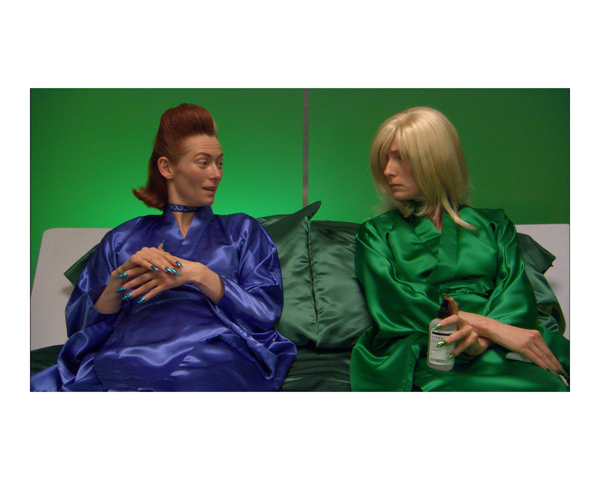
Lynn Hershman Leeson, video still from Teknolust (2002)
Photo: Lynn Hershman Leeson© Lynn Hershman Leeson
7. Lynn Hershmann Leeson, Deichtorhallen, Hamburg
This decade-spanning survey was exhibited at the Zentrum für Kunst und Medientechnologie in Karlsruhe earlier this year, and can keep touring to every city in Germany as far as we’re concerned.
The American media-art pioneer Lynn Hershman Leeson turned to performance and conceptual art in the late 1960s and early 1970s, creating works that have anticipated various phenomena related to digital technologies and virtual realities.
Her influential performance work Roberta Breitmore (1973-78) explored the conceptual ideas of fractured identity and multiplicity in contemporary life. In Teknolust (2002), she addressed surrogate cyber-identity, artificial intelligence, cloning, and the decoupling of sexuality and human reproduction. Meanwhile, newer works include robots, smart-phones, and cutting edge developments in genetics and regenerative medicine.
“Lynn Hershman Leeson, Civic Radar” is on view at the Falckenberg Collection, Hamburg, from June 14 – November 15, 2015.
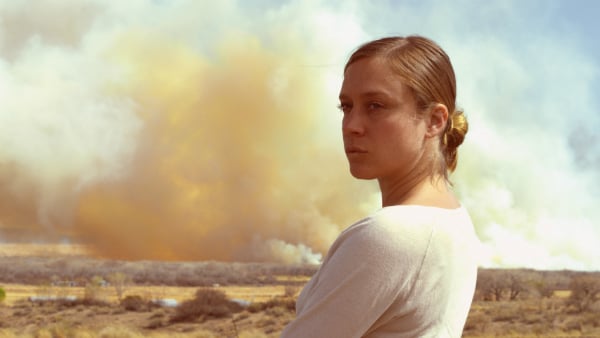
Doug Aitken Black Mirror (2011)
Photo: Courtesy the artist; 303 Gallery, New York; Galerie Eva Presenhuber, Zurich; Victoria Miro Gallery, London; Regen Projects, Los Angeles Film Still © Doug Aitken
8. Doug Aitken, Schirn Kunsthalle, Frankfurt
The first major survey for the American artist in Germany fills the 1,400 square meter space with film works and sound sculptures, both inside the museum as well as in its outdoor space, creating a powerful and immersive synesthetic experience.
Doug Aitken’s kaleidoscopic universe revolves around life’s existential questions, but rather than supplying direct answers, the artist delves deeper into an almost naïve fascination with the human condition, as well as people’s sense of collectivity and cooperation.
“Doug Aitken” is on view at Schirn Kunsthalle, Frankfurt, from July 9 – September 27, 2015.
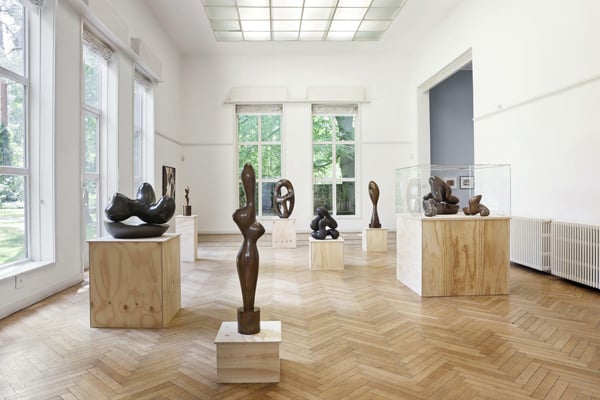
Jean (Hans) Arp, installation view “The Navel of the Avantgarde”
Photo: Enric Duch
9. Jean (Hans) Arp, Georg Kolbe Museum
A co-founder of Dadaism and a pioneer of Surrealism, the German-French Jean (Hans) Arp was a central figure in the European Avant-Garde and Modernist Abstraction, having founded the group Abstraction-Création in Paris in the 1930s.
The large-scale show in Berlin’s charming Georg Kolbe Museum traces the oeuvre of this lyrical and political artist with an abundance of sculptures, reliefs, prints, photographs, poems, and texts, making a re-discovery of Arp’s work possible again, after too long of a pause when no institution in Germany dared to exhibit his works due to a controversy over the authenticity of unauthorized casts.
“Jean (Hans) Arp, The Navel of the Avantgarde” is on view at the Georg Kolbe Museum, Berlin, from June 28 – October 11, 2015.
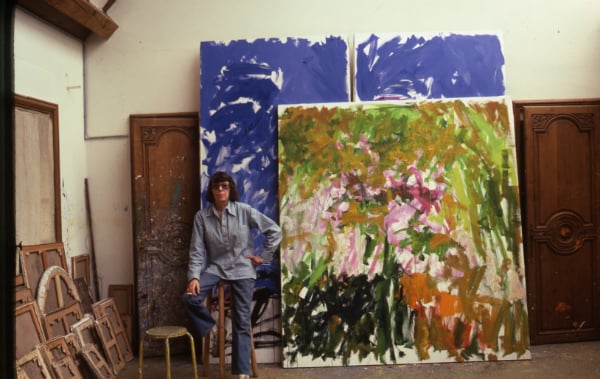
Joan Mitchell in her studio in Vétheuil, 1983
Photo: © Robert Freson, collection of the Archive of the Joan Mitchell Foundation, courtesy Kunsthaus Bregenz
10. Joan Mitchell, Kunsthaus Bregenz, Austria.
Ok, we’re cheating a bit, and looking across the border to Austria. But seeing that Bregenz is only a stone’s throw away from Munich, and that this is a retrospective organized in collaboration with the Ludwig Museum in Cologne, where the show will travel to in the fall, we allow ourselves some leniency.
This career-spanning exhibition focuses on the paintings of the American Abstract Expressionist artist, starting from the 1950s and tracing the changes in her work as her health and well-being deteriorated. Archival material from the Joan Mitchell Foundation, New York, is on view for the first time to such an extent, and sheds lights not only on Mitchell‘s own lustrous character, but also on her ties to other luminaries of her generation, such as Elaine de Kooning, Jean-Paul Riopelle, Frank O’Hara, and Samuel Beckett.
“Joan Mitchell, A Retrospective” is on view at Kunsthaus Bregenz from July 18 – September 25, 2015.